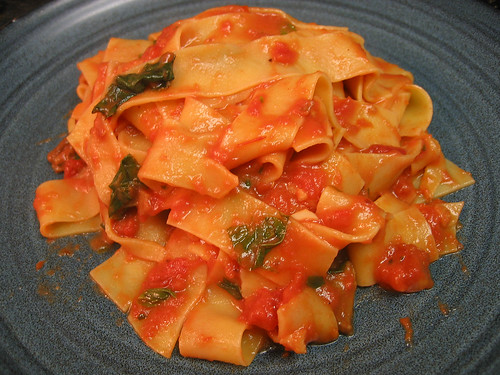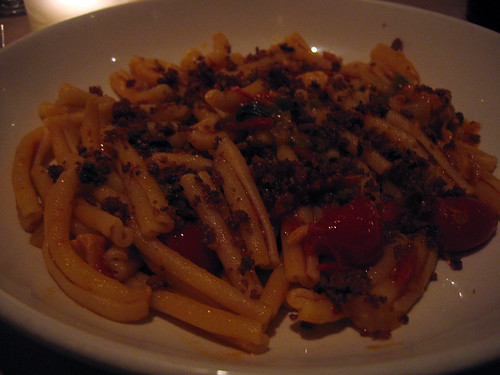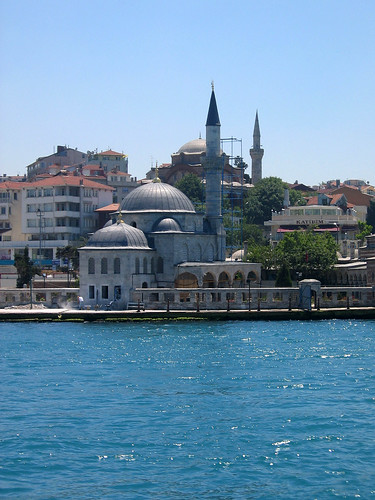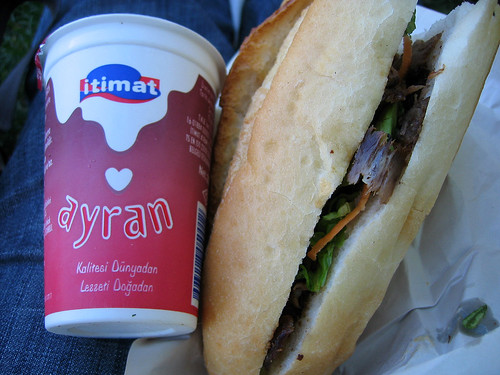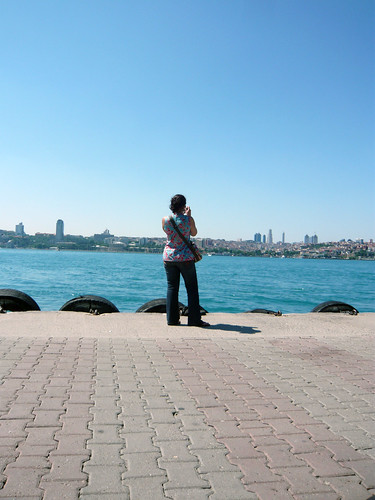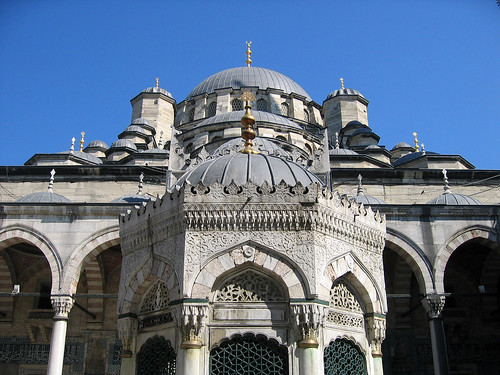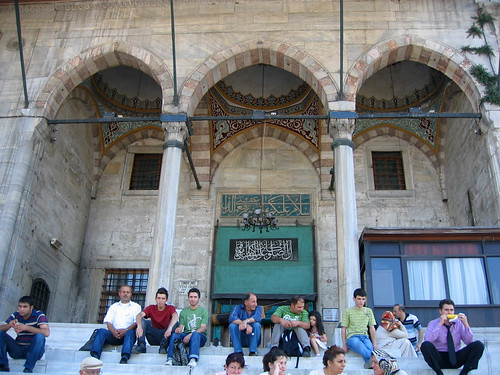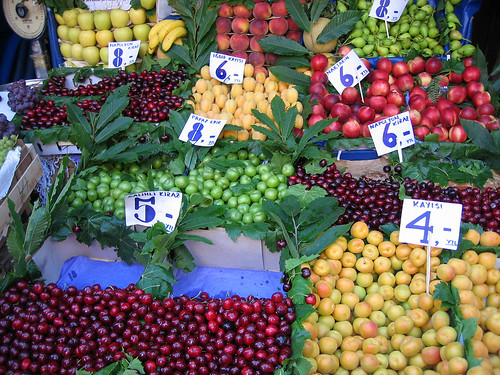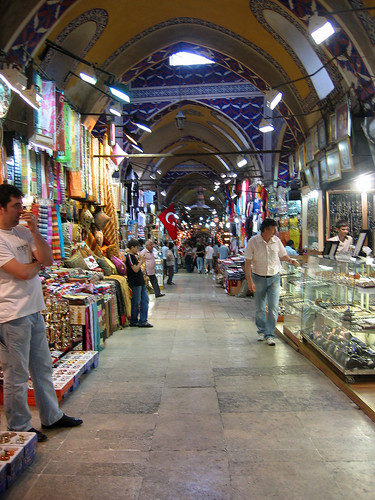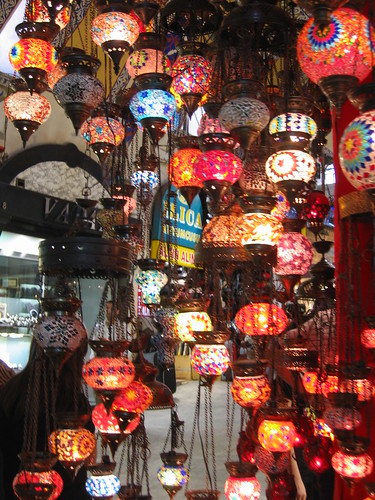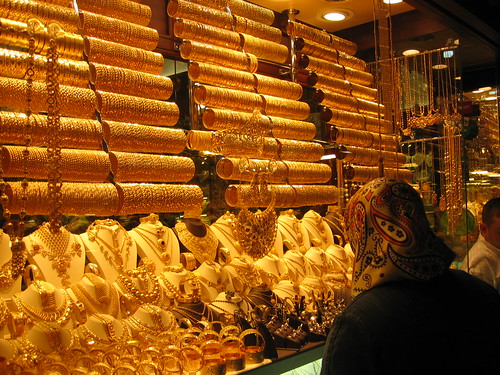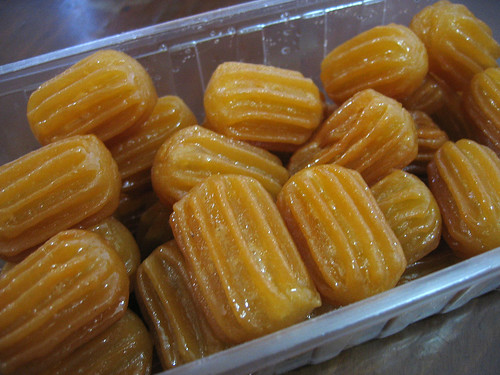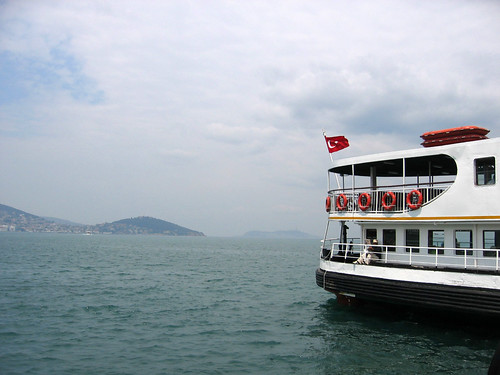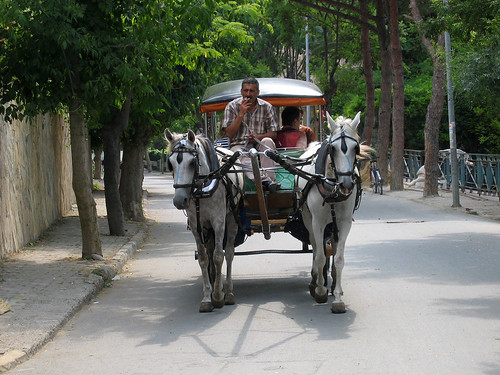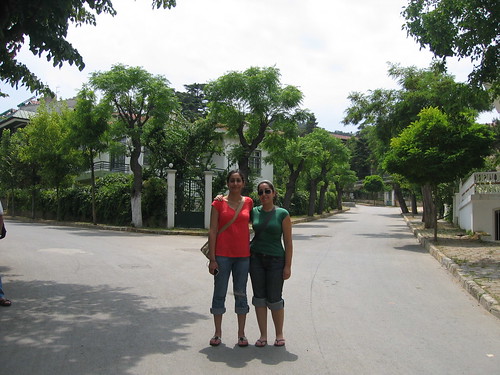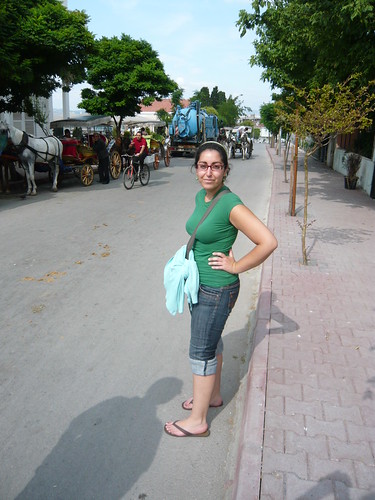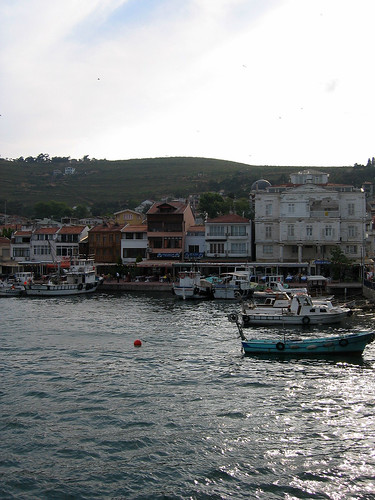I’ve been cooking with dried porcini mushrooms a lot lately. I used them liberally in two Thanksgiving dishes: baked pasta shells with cheese, porcini, pancetta and radicchio; and porcini-potato gratin.
But we’ll get to those later. One of my favorite uses of this super-flavorful mushroom is in a pasta sauce, made even richer with the addition of creamy mascarpone cheese. Stirring in a classic tomato sauce at the end helps balance things out with a bit of acidity, making for a wholly satsifying dish.
Ingredients:
2 cloves garlic, chopped
3Â tablespoons olive oil
1/4 teaspoon red chili flakes
1/2 teaspoon dried oregano
2 cans whole plum tomoates (preferably San Marzano)
1 teaspoon balsamic vinegar
1 handful basil, coarsely chopped
3 ounces dried porcini mushrooms
3 tablespoons mascarpone cheese
1 package pappardelle pasta
Salt and pepper to taste
1. In medium pot, gently saute the garlic with one tablespoon olive oil, and then add the chilli, oregano and tomatoes. Mix gently, taking care to not break up the tomatoes (this makes the sauce slightly bitter).
2. Bring to a boil and simmer gently for an hour. Add the vinegar, then stir and break up the tomatoes in the sauce with the back of a stirring spoon. Add basil, season well to taste, and add one tablespoon olive oil. Cover and set aside.
3. Place the dried porcini mushrooms in a small bowl and add 1 cup boiling water for 15 minutes. Meanwhile, heat the remaining olive oil and garlic in a medium pan and saute over low heat for 5 minutes.Â
4. Pick out the soaked porcini, reserving the porcini broth, and add porcini to the pan. Saute for 5 minutes. Pour in half a cup of the reserved porcini broth and discard the remainder. Simmer the mushroom mixture until the liquid is absorbed and then add the tomato sauce. Add the mascarpone and season to taste.
5. Meanwhile, cook the papardelle in salted wated until al dente and drain. Add pasta to sauce and toss. Serve warm.

